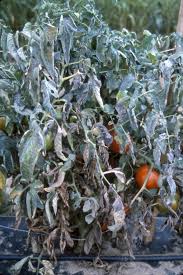
How to remove mildew Tomato
A common problem that we may have at the time we grow tomatoes is to discover, especially during high temperatures, our tomato plants are drying up and that in principle there is no reason to explain this behavior. We may think that lacks water but increased the supply of water will aggravate the problem.
It might have mildew in tomatoes, i.e., a fungus that is capable of causing damage in this crop. It also affects other varied vegetables like potatoes or eggplants, so we must be cautious with him.
Want to know how to face him before something goes wrong? Just read on to find out.
Symptoms of downy mildew on tomato plants
Contents
- On leaves: The first thing we notice is that the leaves have expressed irregular spots with a slightly oily appearance. However, it is not always easy to detect this stage as quickly necrosarán until almost completely invade the whole leaflet. Analyzing more in detail, the affected area discovers a felt white (on the underside), and all surrounded with a thin film of moisture.
- In the stem: the stem also discovers some essential symptoms. The mildew Tomato start showing brown gears will become more substantial and can reach circumcising.
- In fruits: This fungus only can affect immature fruit. Generating large stains brown with irregular contour, surface, and glass will be presented. The infection starts from the vessel, and other symptoms only affect the top of the fruit.
Terms
It is essential to pay attention to the conditions that cause mildew in tomatoes, so try to avoid them or be prepared when the time comes.
- Temperature: The temperature at which this fungus appears varies, but experts have concluded that it will be located between 10 and 25 ° C.
- Relative humidity: As the comparable humidity conditions, this will be over 90%.
- Propagation: The propagation of the fungus is possible thanks to external weathering, how winds and rain. Also, it affects the morning dew, sprinkler irrigation, and condensation drops.
How to avoid mildew tomato?
Here are some preventive measures:
- Correctly handles the ventilation environment. Maintain proper ventilation can help us avoid unpleasant surprises.
- Beware excessive moisture. Uses devices such as hygrometers to have it controlled at all times.
- In case you have detected affected plants and fruits, we must remove them. Pruning can be an excellent initial resource … but if it fails, we will have to get rid of the plant before they infect others.
- It is crucial to control the conditions conducive to the development of the disease; at the moment to occur, we must start with preventive treatments.
How to remove mildew in tomatoes?
The downy mildew on tomato plants will be virtually impossible to remove if the bacteria has come a long way.
However, in the early days we can apply some natural fertilizers, to respect the plant, but at the same time be aggressive enough to kill the fungus.
If you do not want to use herbicides, we can always opt for natural remedies: some are made with chamomile, ponytailed or garlic which are quite useful.


